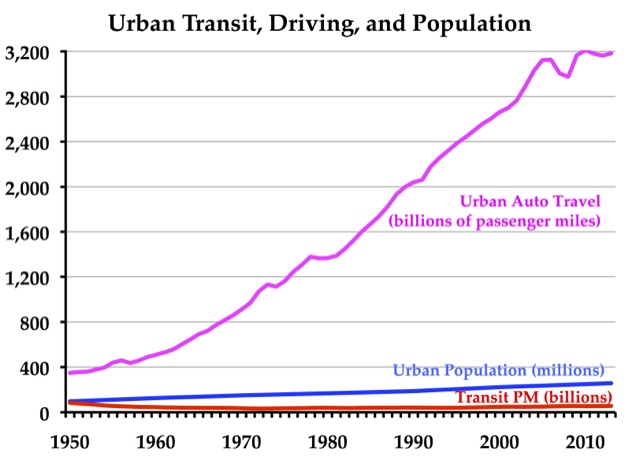Randal O’Toole blogs for “Cato At Liberty” that transit advocates are reading way too much into some new data.
The American Public Transportation Association (APTA) argues that a 0.7 percent increase in annual transit ridership in 2013 is proof that Americans want more “investments” in transit–by which the group means more federal funding. However, a close look at the actual data reveals something entirely different.
It turns out that all of the increase in transit ridership took place in New York City. New York City subway and bus ridership grew by 120 million trips in 2013; nationally, transit ridership grew by just 115 million trips. Add in New York commuter trains (Long Island Railroad and Metro North) and New York City transit ridership grew by 123 million trips, which means transit in the rest of the nation declined by 8 million trips. As the New York Times observes, the growth in New York City transit ridership resulted from “falling unemployment,” not major capital improvements.
Meanwhile, light-rail and bus ridership both declined in Portland, which is often considered the model for new transit investments. Light-rail ridership grew in Dallas by about 300,000 trips, but bus ridership declined by 1.7 million trips. Charlotte light rail gained 27,000 new rides in 2013, but Charlotte buses lost 476,000 rides. Declines in bus ridership offset part or all of the gains in rail ridership in Chicago, Denver, Salt Lake City, and other cities. Rail ridership declined in Albuquerque, Baltimore, Minneapolis, Sacramento, and on the San Francisco BART system, among other places.
Rail and bus ridership have grown in Seattle and a few other cities, but the point is that construction of expensive transit projects with federal funds is not guaranteed to boost transit ridership. In many cases, overall transit ridership declines because the high costs of running the rail systems forces transit agencies to cut bus service.
The chart below should help cure people of the mistaken belief that people are flocking in droves toward public transit options.



